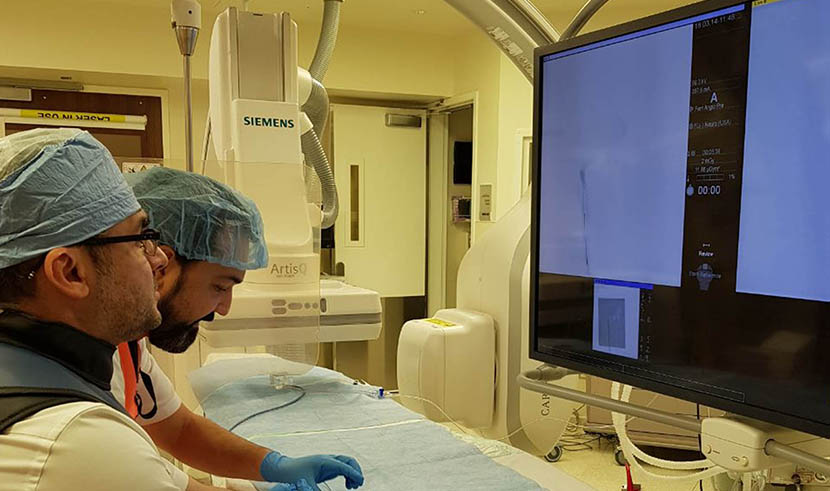
Brain surgeons at Cleveland Clinic Abu Dhabi have begun using detailed 3D models of patients’ brains to plan and even practice complex procedures.
Technological advances in imaging and materials mean that doctors can now produce a detailed scan of a patient’s unique pathology and use them to produce anatomically correct models. This enables surgeons to develop a surgical approach tailored to an individual patient, improving patient outcomes.
“3D models are used to plan surgeries in a number of fields. However, due to the complexity and intricacy of brain surgery, having the ability to plan and practice a procedure before we perform it on the patient is a huge benefit,” said Dr. Ramon Navarro, a neurosurgeon at Cleveland Clinic Abu Dhabi.
Those benefits are particularly apparent in procedures to treat aneurysms such as endovascular coiling and the insertion of stents, which can be extremely challenging, particularly as surgeons only have one chance to place a stent or coil correctly.
“One of the biggest challenges is determining proper sizing and placement of a stent or coil. Unlike in open surgery, we only have one chance to correctly deploy a stent or coil. We’re deploying something through a 0.3mm tube and any mistake can mean serious complications for the patient. Having the opportunity to practice allows us to identify challenges before we begin operating, particularly in the most complex cases,” added Dr. Navarro.
Before the introduction of 3D models, surgeons determined the size of stent to select based on imagery and, more recently, computer simulations. These simulations lacked realistic haptic feedback, limiting their usefulness in preparing surgeons for the real operation.
Now, surgeons produce a 3D model of the affected part of a patient’s brain in silicone that can be connected to a fluid pump to provide as lifelike a simulation as possible. This allows them to better determine the size of stent needed and practice deploying it in advance of the surgery.
An improperly sized stent can mean operations take significantly longer than necessary and, if the stent is deployed, can cause serious complications. An undersized or misplaced stent can cause thrombosis of the stent, an immediate stroke that requires emergency treatment. By practicing in advance, surgeons are better equipped to avoid adverse effects, providing better outcomes for patients.
“Endovascular neurosurgery is a very tool-oriented field. These models mean we can practice using new tools in realistic conditions before operating on our patients. This really is a model for the future, not just in endovascular surgery, but in all surgery,” said Dr. Florian Roser, Chair of the Department of Neurosurgery.
“CCAD has established a multi-disciplinary team of five neuro-interventionalist from various specialties such as neurosurgeons, neuroradiologists and stroke neurologists to serve our patients. I want our patients to be offered the newest treatment options through an effective and innovative team approach, and 3D models are just one more step in our efforts to bring the best possible care to Abu Dhabi,” he concluded.

